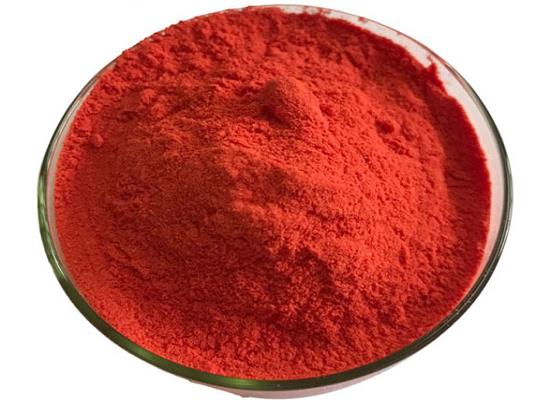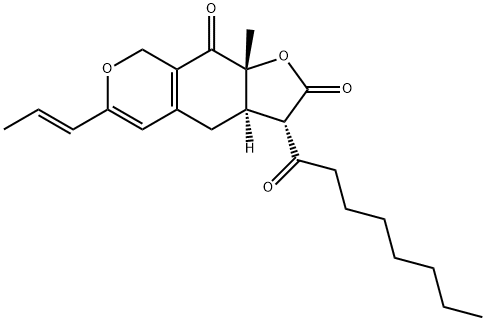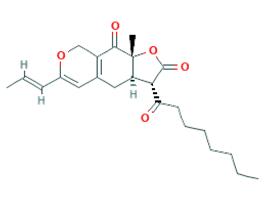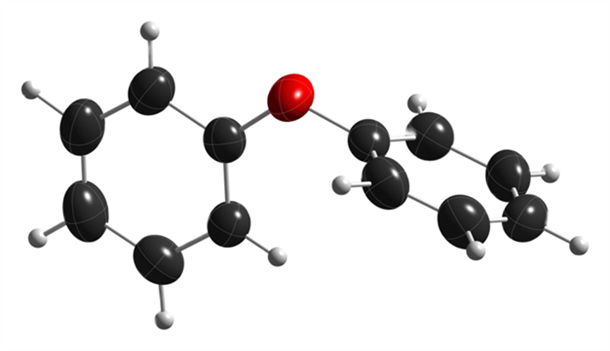Ankaflavin: bioactivities, biosynthesis and applications
General Description
Ankaflavin, a prominent azaphilone compound from Monascus, exhibits diverse bioactivities, including regulation of transcription factors, anti-inflammatory effects, and modulation of lipid metabolism. Its biosynthesis involves the polyketide biosynthetic pathway and can be influenced by genetic manipulation, environmental factors, and key genes such as MpigE. Ankaflavin's properties make it valuable for addressing metabolic disorders, inflammatory conditions, and cancer. Furthermore, its antioxidant, anti-inflammatory, anti-cancer, and potential neuroprotective properties offer wide-ranging applications in therapeutic development and treatment of neurological disorders and infections. Understanding its biosynthesis is crucial for enhancing production and exploring its therapeutic potential.

Figure 1. Ankaflavin
Bioactivities
Ankaflavin, a major azaphilone compound produced by Monascus, shares structural similarities with monascin, differing only in side chain length. These similarities contribute to ankaflavin's numerous beneficial bioactivities. Firstly, ankaflavin has been shown to positively regulate several transcription factors including PPARγ, PPARα, and Nrf-2, indicating its classification as a selective peroxisome proliferator-activated receptor modulator (SPPAM). This classification supports its safety for addressing metabolic syndrome. In addition to its cytotoxic, immunosuppressive, and anti-inflammatory effects, ankaflavin also demonstrates the ability to block TNFα-dependent endothelial cell adhesion and NF-κB activation during hypertension. Furthermore, recent studies have revealed its role in modulating lipid metabolism by stimulating the production of high-density lipoprotein-cholesterol (HDL-C) through Nrf-2 and paraoxonase-1 (PON-1) pathways. Ankaflavin also shows promise in alleviating obesity-related hyperglycemia, non-alcoholic steatohepatitis, and abnormal lipidemia by activating pathways related to PPARγ and PPARα. Moreover, ankaflavin exhibits potential in attenuating liver steatosis and ameliorating steatotic liver ischemia-reperfusion injury by suppressing hepatocyte apoptosis and the production of inflammatory cytokines. Its antitumorigenic activity has also been documented, with ankaflavin inducing apoptosis in cancer cells and demonstrating inhibitory effects on metastatic ability. In summary, ankaflavin's diverse bioactivities make it a promising compound for potential therapeutic applications in addressing metabolic disorders, inflammatory conditions, and cancer. 1
Biosynthesis
Ankaflavin is one of the major yellow pigments produced by Monascus, which has been shown to exhibit numerous beneficial bioactivities. Understanding the biosynthesis of yellow pigments in Monascus is crucial for applying genetic manipulation to pigment production. Yellow pigments, including ankaflavin, originate from the polyketide biosynthetic pathway and are converted into orange pigments, rubropuctatin and monascorubin. The disruption of MpPKS5 in M. purpureus and MpigA in M. ruber results in very low pigment production, while the deletion of MpigE in M. ruber results in very low production of red pigment while retaining the four types of yellow pigments, indicating that MpigE is the key gene involved in the biosynthesis of red pigment. The targeted inactivation of mppE in M. purpureus results in enhanced production of orange and red pigments, whereas the overexpression of mppE promotes the production of yellow pigments. Studies have shown that supplementation with metal ions and free amino acids can increase the production of ankaflavin and other yellow pigments, while high temperature and osmotic stress can induce pigment production in Monascus. Additionally, blue light intensity has been reported to affect pigment production. However, the exact mechanism underlying the regulation of pigment production in Monascus is still unclear. Furthermore, the interaction between the pathways involving key metabolites, such as pigment and citrinin synthesis, needs to be elucidated to understand the network of key biosynthetic pathways. Overall, understanding the biosynthesis of yellow pigments in Monascus is important for the development of strategies to improve their production, which could lead to potential therapeutic applications of ankaflavin and other pigments. 2
Applications
Ankaflavin has various applications due to its unique properties. Ankaflavin has been shown to possess antioxidant, anti-inflammatory and anti-cancer activities. It can help to protect cells from oxidative damage and reduce inflammation in the body. Ankaflavin has also been shown to inhibit the growth of cancer cells and induce cell death in various types of cancer. Furthermore, ankaflavin has potential as a treatment for neurological disorders, such as Alzheimer's disease, due to its ability to protect neurons from damage. It is also being studied for its anti-bacterial properties and potential use in treating infections. Overall, ankaflavin has a wide range of applications and holds promise for future therapeutic development. 3
Reference
1. Hsu WH, Pan TM. Treatment of metabolic syndrome with ankaflavin, a secondary metabolite isolated from the edible fungus Monascus spp. Appl Microbiol Biotechnol. 2014 Jun;98(11):4853-4863.
2. Lin CH, Lin TH, Pan TM. Alleviation of metabolic syndrome by monascin and ankaflavin: the perspective of Monascus functional foods. Food Funct. 2017 Jun 1;8(6):2102-2109.
3. Lai JR, Hsu YW, Pan TM, Lee CL. Monascin and Ankaflavin of Monascus purpureus Prevent Alcoholic Liver Disease through Regulating AMPK-Mediated Lipid Metabolism and Enhancing Both Anti-Inflammatory and Anti-Oxidative Systems. Molecules. 2021 Oct 18;26(20):6301.



